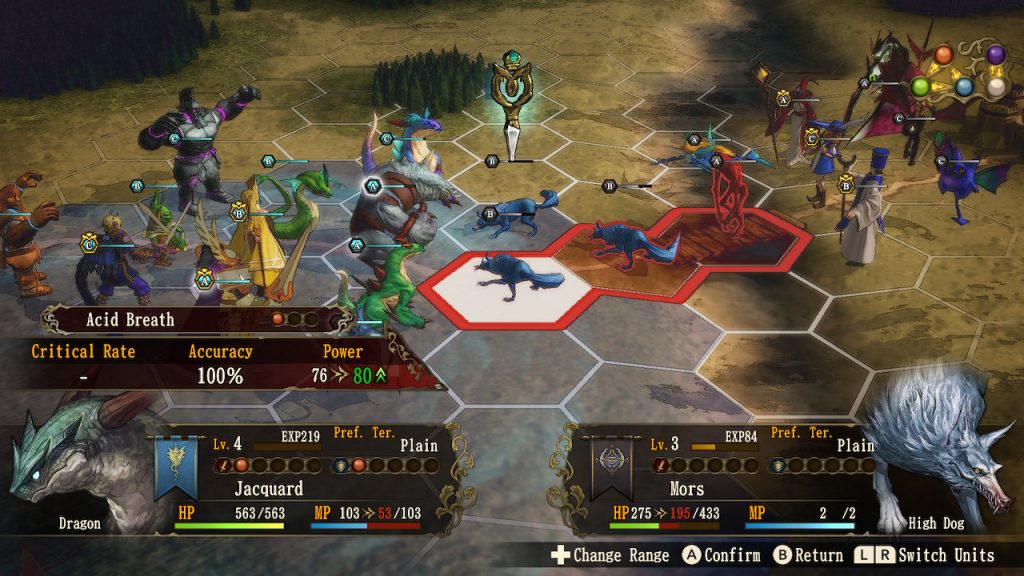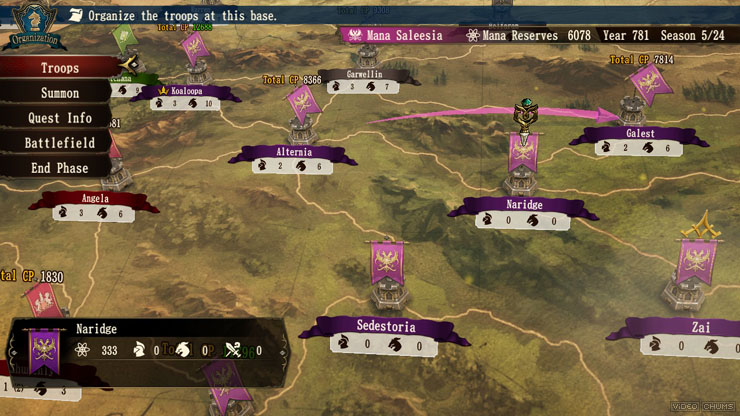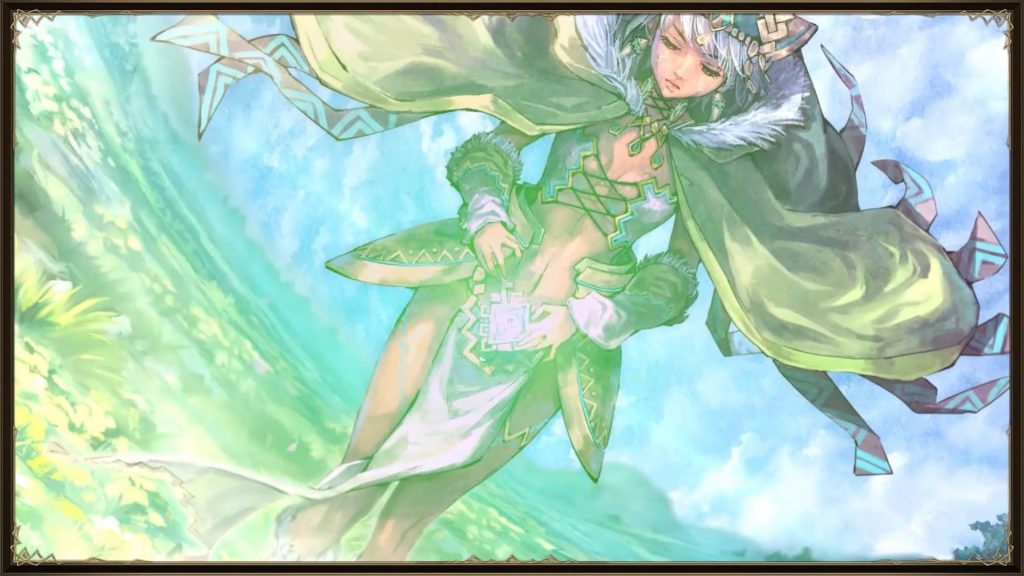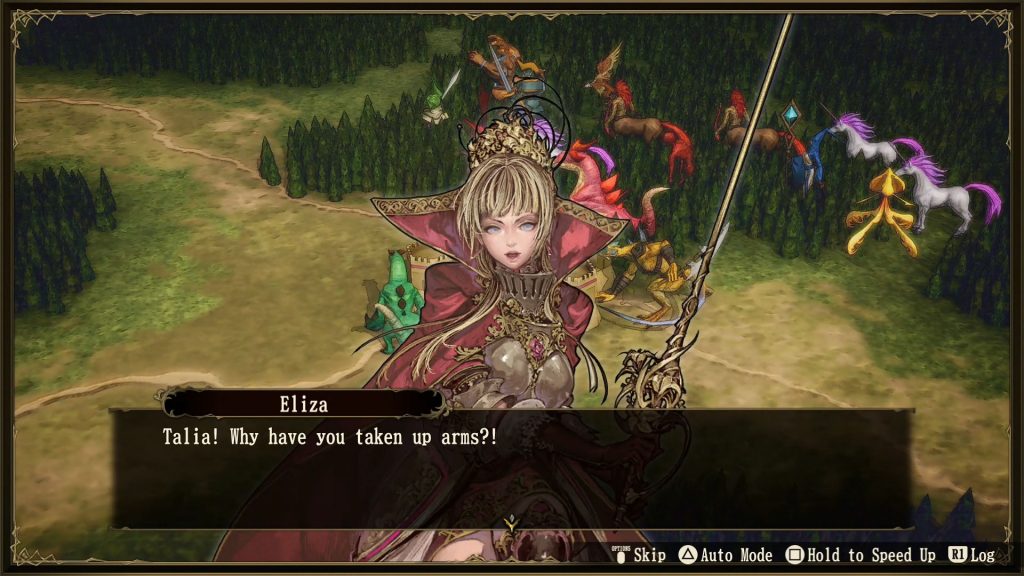Right now remakes, reboots, and sequels to forgotten gems are at an all-time high. There is no shortage of exciting releases and things to consider. Among the ongoing list is Brigandine: The Legend of Runersia, the sequel to the 2000 title Brigandine: The Legend of Forsena. Like a lot of these games, it promises what fans loved from the original, with new some modern features and additional benefits. While this is a recipe for success, will it pan out or does it miss the mark?
Brigandine: The Legend of Runersia tells the story of a conflict that started in 781 between a number of nations fighting for control of Runersia. Players can assume the role of one of these six nations, each with their own story to tell and experiences to share. It’s the type of adventure where each adventure gains more resonance as you experience another story, though it isn’t an overly complicated tale. All of that is left on the shoulders of time tested strategy RPG mechanics.

If I were to describe Brigandine: The Legend of Runersia in a sentence, I would say it’s needlessly complicated and surprisingly tedious. Stages start with you building up your defenses, either through summoning monsters, moving defenses, changing equipment, and then select enemy bases to attack.
Upon initiating combat, players can pick who is going to battle and they engage in a combat sequence. These ultimately act as stages but can be a bit on the tedious side. Defeating anyone can be something of a tedious slog. Even on the first stage, my main warrior can take two phases of four enemies attacking without any of them defeating her and vice versa. As a result, it doesn’t just encourage more tactical choices, it honestly punishes anyone who doesn’t play more effectively.

Instead of focusing on monsters, simply attacking the leader of a group will cause the whole team to retreat. Due to this, there is a lot of risk putting your leader in harm’s way and a lot of rewards if you can make it to the enemy and defeat them. Though even on an initial fight, these can take a while and there is no telling if your strategy will be good enough to actually take over a tower. Often times this causes things to slow down even more, without enough depth to really change things.
Most units start battles with a single attack. During battle, conditions might unlock additional ones but until you progress a bit it’s a series of exchanging blows hoping one doesn’t defeat the other. Sometimes this will work in your favor, other times it won’t, but it makes the whole thing seem even more pointless. Even after multiple attacks success and tactics depend more on luck than skill. There were some matches where the AI put its commanders in super easy locations and I could simply gang up on one or two enemies and win the war, whereas other times I would have to fight every peon and either win with heavy damage or lose with minimal gains.

For better or worse, a lot of time in Brigandine: The Legend of Runersia is spent on set up. There are a lot of mechanics, like countless classes, monsters, and troops, but to make any of them use a lot of time will be spent managing placement and objectives. So, maybe your best fighters need to move to another location for a battle, a turn needs to be spent shuffling everyone around. If you need equipment, people can be sent out on quests or experiences to enhance their power. Even leveling means long term you’ll need to build up classes and make the most of each and every character. Not to mention summoning monsters and building up a reliable set of fighters.
In a lot of ways, this is what makes things feel so overwhelming. There is a ton to do, it often feels like you make little to no progress and there is so much luck involved. It wasn’t uncommon to waste a turn sending 10 allies on a quest and five come back empty-handed. The other five might have a single item that might help some random character but overall the value is low. Not to mention, enemies will also gain power, meaning you can’t really move without falling behind and so little of it matters.

Even if you do everything and make a really powerful team, ultimately they just need to be strong enough to defeat one to three enemies. Even without killer gear or a high level, many characters can hold their own and prove useful against a powerful foe. However, what is the incentive to gain power if ultimately a good or bad play can make the difference between winning the battle and coming out ahead Brigandine: The Legend of Runersia asks a lot of questions like this, without many answers, forcing players to decide if a lot of micromanagement for decent strategic RPG gameplay is worth it.
Brigandine: The Legend of Runersia Review – Verdict
On paper, there are a lot of cool things about Brigandine: The Legend of Runersia. Lots of characters, monsters, tactics, mechanics, elements, and more to play with. Seriously, it’s overwhelming, to say the least. Where things fall off the rails is how much management is involved. You could, quite honestly, spend 20 minutes picking who to send get gear, which locations have the best monsters to summon, getting people to the right places, and deciding the ideal play to fight. That is a lot to ask from any player for a relatively unimpressive strategy RPG. When push comes to shove, the goal is to spend a bunch of time so when you move characters across a grid and attack whoever or whatever gets in your way, it won’t end in total defeat. Maybe if there was more or it took longer for everything to unfold but in its current state, it really won’t appeal to everyone.
[Editor’s Note: Brigandine: The Legend of Runersia was reviewed on PlayStation 5 and a review copy was provided to us by the publisher.]
